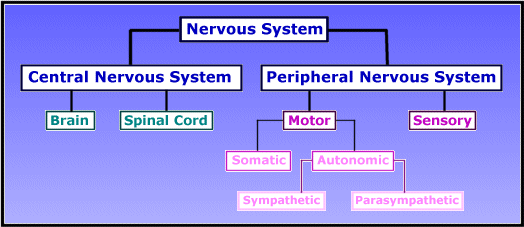Organization of the central nervous system
The Central nervous system (CNS) is the part of nervous system that receives information from and sends information to the peripheral nervous system. The CNS consists of the two main organs that are the brain and spinal cord. Some categorization also includes the retina and the cranial nerves in the CNS. Altogether with the peripheral nervous system, it has a primary role in the control of behavior. The brain processes and interprets the sensory information sent from the spinal cord. The spinal cord and brain both are protected by the three layers of connective tissue known as the meninges.

Figure:Organization of the central nervous system
In the central nervous system, there is a system of hollow cavities known as the ventricles. The network of linked cavities in the brain (that is, cerebral ventricles) is continuous with the central canal of the spinal cord. Ventricles are filled with the cerebrospinal fluid that is produced by specialized epithelium positioned within the ventricles known as the choroid plexus. The Cerebrospinal fluids surrounds, cushions, and protect the spinal cord and brain from trauma. It also assists in the circulation of the nutrients to brain.